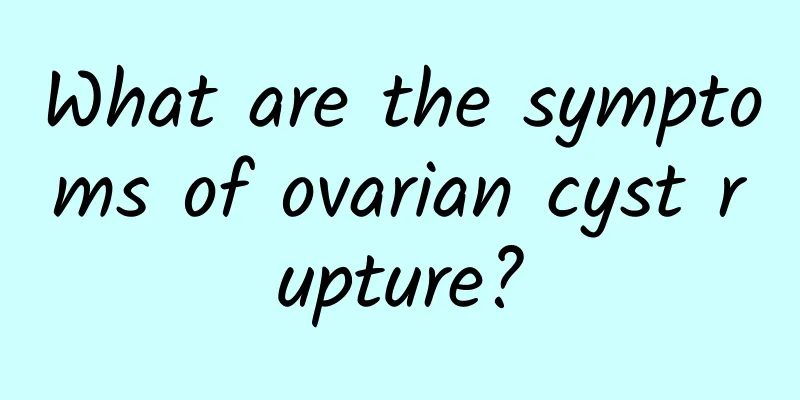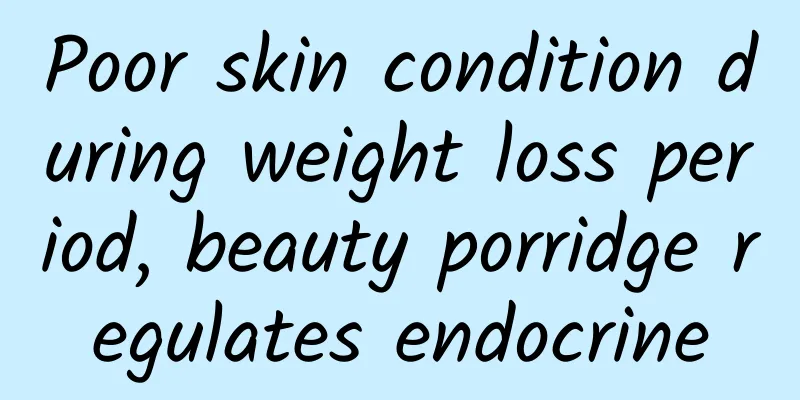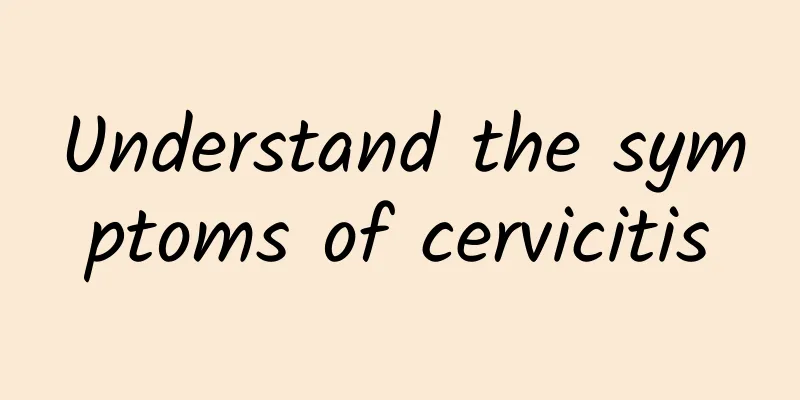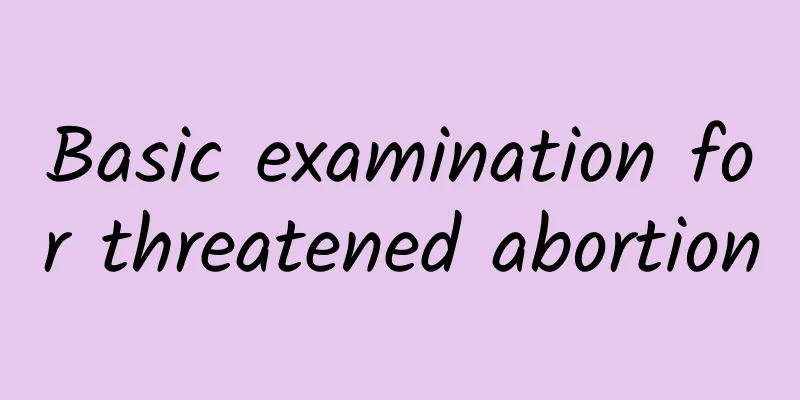Does a low-sugar diet mean not eating starch? How much sugar should I reduce to lose weight? Five principles for healthy sugar reduction revealed
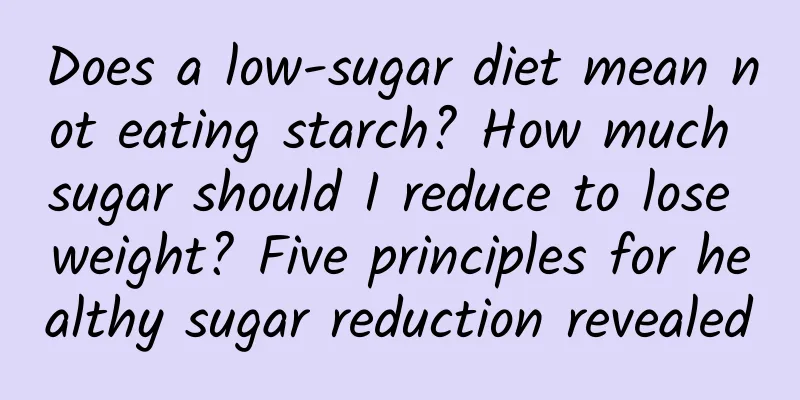
|
Does a low-sugar diet mean not eating starch? Many people will ask: "Reducing sugar intake means not eating any starch, right?" In fact, reducing sugar intake still requires the intake of sugar, but there are many ways to reduce sugar intake. The basic concept starts with reducing the amount of refined sugar and refined starch. The sugar next to the rice character is a type of sugar, which is a refined sugar and is the culprit for chronic diseases such as obesity, cancer, diabetes, and metabolic syndrome. As people age, their basal metabolic rate will gradually decrease, especially after women turn 25. In the past, they would not gain weight if they drank a glass of sugary drink every day, but now even drinking water will make them gain weight! How to lose weight healthily? Some people say that you should follow a ketogenic diet, some say that you should eat high-protein, and some experts advocate a low-sugar diet. In fact, these weight loss methods are all correct. They all want to achieve the goal of losing weight by choosing the content of food. Today we are going to talk about a “low-sugar” diet. What are the benefits to the body? Also, why can many people lose as much as 10 kilograms in just 3 months by following a low-sugar diet? There are 5 principles you must know! Principle 1: Start by reducing sugar intake The sugar next to the rice character is a type of sugar, which is a refined sugar and is the culprit for chronic diseases such as obesity, cancer, diabetes, and metabolic syndrome. Corning Hospital nutritionist Chen Shiting explained that this is because refined sugar requires less digestive enzymes and is easily digested and absorbed by the body, allowing the broken down glucose to quickly enter the bloodstream, thereby affecting blood sugar. Over time, it can easily increase insulin resistance and lead to diabetes. Furthermore, insulin is a synthetic hormone. When it is secreted, it also promotes the synthesis of fat. This is why people who eat a lot of sugar are often prone to high triglycerides, obesity, and metabolic syndrome. Therefore, when you want to implement a sugar-reducing diet, you must start by reducing sugar, including any bread, sweet drinks, candy, chocolate, cake, steamed buns, noodles, etc. Principle 2: Reduce the amount of carbohydrates How much sugar should be reduced? A strict sugar-reducing diet limits carbohydrate intake to 50 to 60 grams per day, but Chen Shiting suggests that if the daily carbohydrate intake can be controlled to around 100 grams, it will be relatively convenient to implement and easier to sustain. Regarding the amount of carbohydrates we eat, we just need to remember a simple principle: reduce the amount of staple food we usually eat to 1/2 to 1/3. For example, instead of eating a bowl of rice at each meal, we can change to only eating 1/2 or 1/3 of a bowl. The advantage of this is that blood sugar is less likely to fluctuate and hunger is less likely to occur. This principle is like after eating a big meal, the body knows that blood sugar is soaring, so it will secrete a large amount of insulin to lower blood sugar, but if blood sugar drops too quickly, hypoglycemia will occur. At this time, the body will instinctively feel hungry and stimulate appetite, making you want to eat, which in turn increases blood sugar. This is one of the reasons why people who often drink sugary drinks and eat large meals are prone to gain weight. As for how to choose carbohydrates, it is recommended to replace refined sugar with complex sugars in the staple foods of the three meals, that is, replace white rice with whole grain rice or root vegetables such as sweet potato, pumpkin, taro, etc.; replace white bread and white noodles with whole wheat noodles and whole wheat bread. Because they are high in fiber, minerals, trace elements and vitamins, they are less likely to cause blood sugar fluctuations and are not easy to gain weight. What you really need is "sugar", not sugar "Sugar" with the character "酉" on the side is a general term for carbohydrates. Refined "sugar" and starch are both types of carbohydrates. When carbohydrates enter the body, they are digested and broken down into glucose with the help of gastrointestinal enzymes. Glucose enters the blood and, with the help of insulin, enters the cells for storage and utilization. We need glucose as energy when we walk, run, or simply think, sit on the sofa and watch TV, etc. Especially for brain cells, the only nutrient that can be used as an energy source is glucose (Note: when the body does not have enough glucose, brain cells can switch to using ketone bodies as an energy source). Therefore, many people think that a low-sugar diet means not eating any starch at all, which is a wrong concept. Chen Shiting reminded that no matter whether it is sugar or sugar, it is essential for the human body. Without sugar, life cannot be maintained. The premise is that it is not good if it is excessive. However, refined "sugar" can easily cause blood sugar fluctuations and accumulate fat. Therefore, it is recommended that complex sugars should be used as our normal staple food source. Principle 3: Replace carbohydrates with protein and vegetables Any weight loss diet must limit the total amount of calories, because the energy you eat will not increase or decrease by itself. Even if you adopt a relatively healthy eating method, as long as you eat more calories than the body can bear, the excess energy will still be converted into fat storage. Therefore, the key is to reduce carbohydrates while limiting calories and replace them with protein and vegetables to achieve the goal of reducing sugar. Here is a simple method: carbohydrates: protein: vegetables = 1:2:3. For example, if you eat half a bowl of rice today, then you should eat at least one bowl of protein and at least one and a half bowls of vegetables, so that you can feel full while limiting calories. The amount of fats and oils remains the same, but keep in mind one principle: replace saturated fats with unsaturated fats. That is, eat less lard, butter, etc. that are highly saturated, and use unsaturated fats such as olive oil, fish oil, canola oil, grape seed oil, etc. as daily oils. In other words, for protein, we should try to choose fish, chicken, and soy products with lower saturation. If we eat pork, beef, or mutton, it is recommended to remove the skin and avoid fried products. All kinds of vegetables are fine, and it is best to have 2 to 3 kinds of vegetables of different colors in each meal so that you can eat different types of phytochemicals. Principle 4: Pumpkin, sweet potato, and taro are not vegetables, they are carbohydrates Many people worry that some vegetables contain too much sugar, which will affect their weight loss results, so they do not eat them. Instead, they eat large amounts of protein to increase satiety. Chen Shiting said that this would instead cause the body to produce too much nitrogenous waste, causing a burden on the body; and in the absence of fiber, it would not be easy to lower cholesterol, and could even cause constipation problems. In fact, pumpkin, sweet potato, and taro, which are high in sugar, are not vegetables, but carbohydrates, just like rice and noodles. Other foods including mung beans, red beans, lotus seeds, coix seeds, corn, chestnuts, etc. are all staple foods, and the amount at each meal must be controlled to less than half of the original amount. In other words, if you eat 2 pieces of pumpkin, it is not recommended to eat it as the main meal. (Note: Foods with a sandy texture are usually staple foods) Chen Shiting added that the sugar content in vegetables is very low, and it is recommended to eat all kinds of vegetables, and eat at least three times the amount of staple food at each meal. Because the sugar-reducing diet reduces the amount of whole grains a lot, many trace elements and vitamins may be deficient, so you must eat more vegetables. Principle 5: Maintain 2 servings of fruit a day You can eat 2 servings of fruit a day. One serving is about the size of a fist, such as an orange, a small five-clawed apple, one and a half kiwis, one and a half wax apples, and half a guava. It is recommended to eat between meals to avoid blood sugar fluctuations. It is worth noting that you should not drink fruit juice. Even 100% restored fruit juice is not recommended because fruit juice lacks fiber and is mostly fructose, which can easily cause blood sugar fluctuations. Is it okay to drink the fruit if it is blended in a juicer along with the fiber? Chen Shiting said that this approach is feasible, but because we drink beverages at a very fast speed, it is more likely to cause fluctuations in blood sugar than eating fruits. This article is excerpted from Changchun Monthly Issue 456 Source: ※This article is authorized by Changchun Monthly. Reprinting is prohibited without consent. Click here to view the original article Source: ※This article is authorized by Changchun Monthly. Reprinting is prohibited without consent. Click here to view the original article |
>>: Does intermittent fasting really help lose weight? Study: Eating during this time is healthy
Recommend
Understand the considerations for menopausal health care
How to do preventive health care during menopause...
Adolescent girls with irregular menstruation usually have menstruation that stops for several months after menarche.
Menstrual irregularities in teenage girls have be...
Dietary principles and taboos for cervical warts
Patients suffering from cervical warts, in order ...
Is endometrial tuberculosis contagious?
Is endometrial tuberculosis contagious? Endometri...
Detailed explanation of the characteristics of cervical cysts
Cervical cyst is one of the more common gynecolog...
What medicine can I take for uterine fibroids? What Chinese medicine can I take for uterine fibroids?
Uterine fibroids are one of the common gynecologi...
How to prevent endometriosis in daily life
Endometriosis not only brings harm to women, but ...
Does endometrial thickness affect pregnancy?
Nowadays, if many women are preparing to get preg...
What are the obvious symptoms of habitual miscarriage in women?
The first is vaginal bleeding in women. As for ha...
How harmful are uterine fibroids to women?
The reason why most women do not pay attention to...
What to do if you have adenomyosis and brown blood in early pregnancy
What should I do if I have brown blood in the ear...
Beware! Causes of ectopic pregnancy in women
What are the causes of ectopic pregnancy in women...
What are the clinical manifestations of vulvar leukoplakia? The most prominent symptom of vulvar leukoplakia is vulvar itching.
Vulvar leukoplakia can cause itching and dry skin...
Traditional Chinese medicine hemostatic prescription for treating uterine fibroids
Traditional Chinese medicine hemostatic prescript...
Experts will explain to you the symptoms of secondary dysmenorrhea
It is necessary for everyone to understand the sy...

